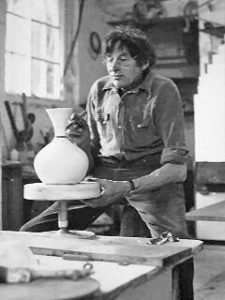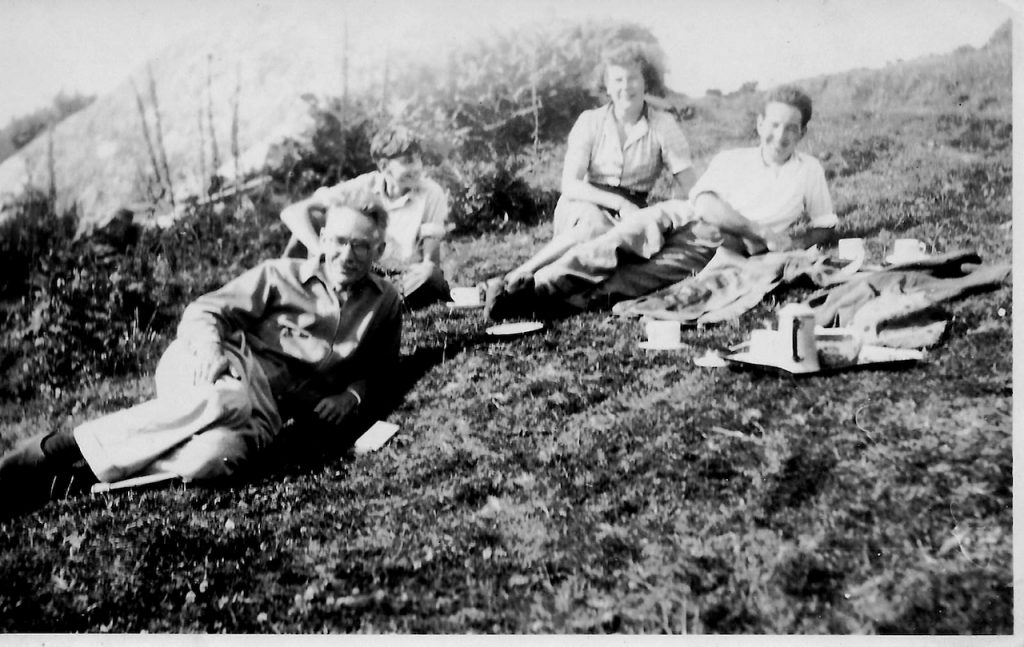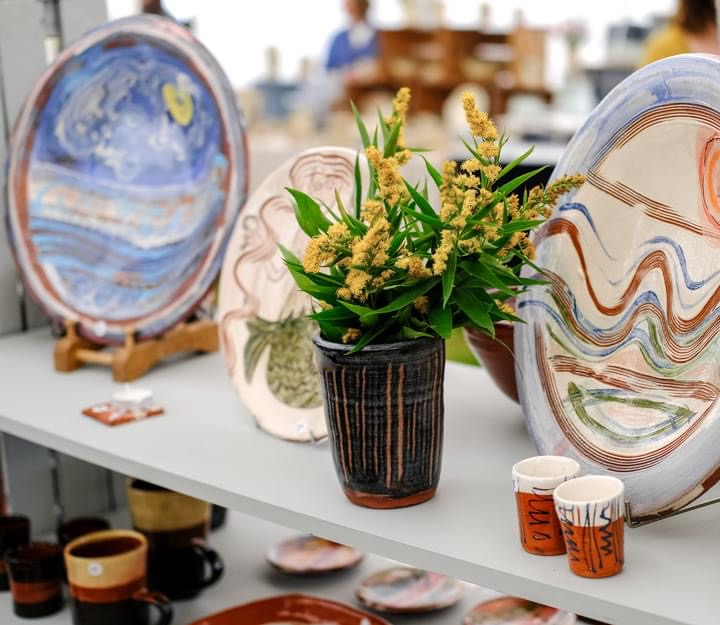Robert Louis Blatherwick 1920 – 1993
 Bob was born in Lincoln and studied at Lincoln School of Art, where he received The Gibney Art Scholarship and went to Wedgwood Pottery in Stoke-on-Trent. He was appointed by Michael Cardew as workshop assistant to keep Winchcombe Pottery functioning while he and Ray Finch were absent. He then was appointed by Bernard Leach as his workshop assistant in St Ives, as his other main throwers had been conscripted. (Bob was skilled and available and exempt from war duties). On his return to Lincoln he began teaching pottery in the Art School, with many notable students, including Gordon Baldwin, before resigning from this post in 1967. During this period he made stoneware and earthenware work.
Bob was born in Lincoln and studied at Lincoln School of Art, where he received The Gibney Art Scholarship and went to Wedgwood Pottery in Stoke-on-Trent. He was appointed by Michael Cardew as workshop assistant to keep Winchcombe Pottery functioning while he and Ray Finch were absent. He then was appointed by Bernard Leach as his workshop assistant in St Ives, as his other main throwers had been conscripted. (Bob was skilled and available and exempt from war duties). On his return to Lincoln he began teaching pottery in the Art School, with many notable students, including Gordon Baldwin, before resigning from this post in 1967. During this period he made stoneware and earthenware work.
He had purchased a redundant village bakery in Reepham near Lincoln in 1955 for £350.00. Together with Marjorie, his wife-to-be, they converted it into a flat with a workshop and gallery space below. The workshop design and layout was informed by the practical ideals of Winchcombe and St Ives, and the apartment upstairs informed by Danish design, where his sister lived. Bob’s father was a master craftsman in wood and able to help in a practical way with the conversion. Upon resigning, Bob cashed-in his pension, which provided enough money to live on for one year. He purchased a wheel and a kiln and set about making pots full-time. Marjorie managed the showroom in the house, and delivered his work to galleries all over the country, including the Craftsman Potters shop in Marshall Street, London, as Bob did not drive. She dealt with the business side, and used the phone box in the village as they did not have a telephone. Bob believed that earthenware had unexplored potential. He focused on developing his own unique style, and developed methods of applying slip and making his own glaze recipes that gave a stoneware like appearance. His designs, bodies and glazes were constantly re-assessed, as he explored and adjusted the possibilities. Collector Bill Ismay wrote to him to ask what his secret was. Stoneware at the time was very popular, and everyone was doing it; Bob wanted to do something different.
He undertook commissions and created individually designed slab or thrown pieces, including sets of domestic ware, jewellery, sculptural forms and tiles. His work went all over the world, with commissions from Japan and Canada. A coffee pot has recently been found in an auction in Australia! But his work was often un-marked, as he believed, like Hamada, that a pot should speak for itself. He would never have expected the desire of today’s collectors to know who made what.
Marjorie ran the business and was essentially an unpaid worker. She herself was a creative dressmaker, resourceful organiser, and homemaker. She sacrificed a lot to support Bob, and requested to be identified as a ‘Girl Friday’ on their gravestone. They had three children who were under the age of ten when Bob resigned from his teaching. They were brought up solely on the income generated from selling Bob’s pots and Marjorie’s log-cabin velvet cushions, along with apples and honey from the garden. He continued potting, sculpting and painting until he died.
I spent a few years gathering material relating to his life and work, and this is recorded in my thesis: ‘Archeology of the House. Site . Object . Context – Interpreting a Collection: A Study of the Life and Work of Robert Louis Blatherwick (1920-1993)’. I received guidance and advice from experts at Manchester Metropolitan University. I hope to get this published.
Should you wish to contact me with a query relating to my father’s work I am happy to respond.

The tall black Tenmoku glazed pot on the right of this photograph, made by Robert in the 1950s, was exhibited in the Leach Pottery’s Century of Connections exhibition in St Ives.

Cornwall, 1942/43.
